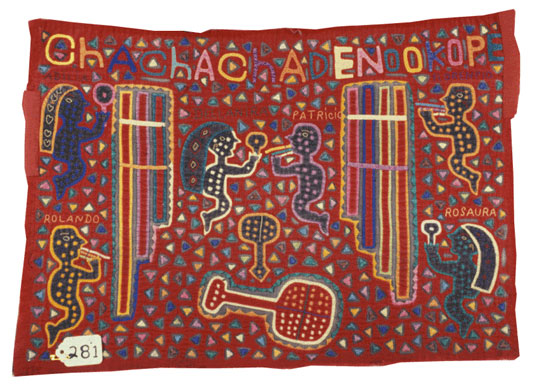On special occasions the whole Guna community celebrates with music and dance. There is a very formalized foot-stamping, quick-turning dance with men lined up on one side and women on the other. Women shake rattles and stamp bare-footed rhythms while the men play reed pipes. These occasions are often the subject of molas.
Ceremonial Dancers: Women Playing Maracas [1997.1.81]
There are many occasions for ceremonial dances on the San Blas Islands. Traditionally the women shake rattles and stamp bare-footed rhythms while the men play reed pipes of Pan. This shows women playing the maracas. This is one of a pair of molas (see 1997.1.80) that is the front and back of the same garment. The pair shows how the woman making the mola would stay within a theme yet change the subject from man to woman. This pair of molas date from the 1950s or 1960s.
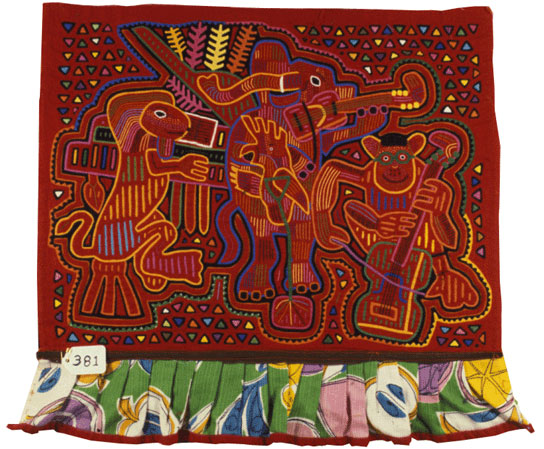
A Musical Combo of Animals [1997.1.182]
This mola depicts a musical combo of animals. There is a lion playing the piano and the central figure is an elephant playing the violin. Meanwhile, in front of him is a parrot on a perch that is the singer of the quartet. To the right side is a monkey playing either a base or a cello. This amusing mola with animals might have been created for a child by a master craftsperson with a great sewing talent and sense of design. It is a marvelously conceived and carefully worked piece.
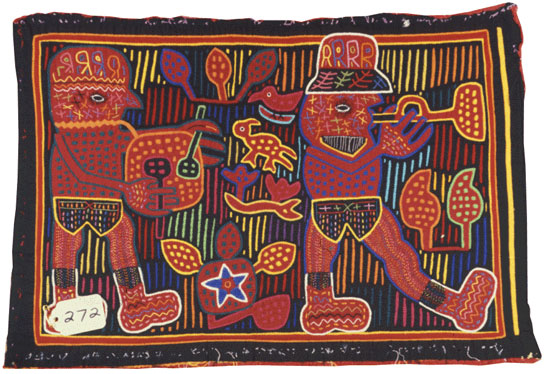
Continuation of Parade [1997.1.201]
One figure in this mola is playing percussion while the other is playing the trumpet. Note the animal and bird in the background. This is one of a pair of molas (see 1997.1.200) that is the front and back of the same garment. The two panels represent a parade taking place on one of the holidays possibly in Panama City. Note the threads on the mola where it was sewn onto the blouse.

Three Guitars [1997.1.289]
This early mola is most likely from the 1940s or 1950s. It shows three guitars that are quite primitively organized and executed. The workmanship on early molas rarely has the finesse of work that was done later in the 60s and 70s on some of the islands.

Ceremonial Dancers: Men Playing Pipes of Pan [1997.1.80]
The mola shows various Guna men playing the reed pipes of Pan during a ceremonial dance. The artist who created this mola must have had in mind a recent festivity because she specifically names the dancers who are probably her friends. She humorously name the piece "Cha Cha Cha de Nookopa", with "de Nookopa" possibly being a ceremonial dance of the island. The maracas and the panpipe are also shown as major elements of the design.
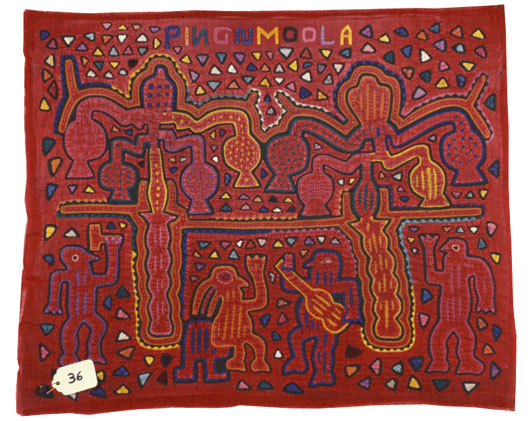
Two Musicians and Two Maracas [1997.1.144]
This is a mola probably from the 50s. It shows musicians at the bottom and two abstract maracas. The large forms are the maracas with handles. It is unknown what the artist meant with the words.
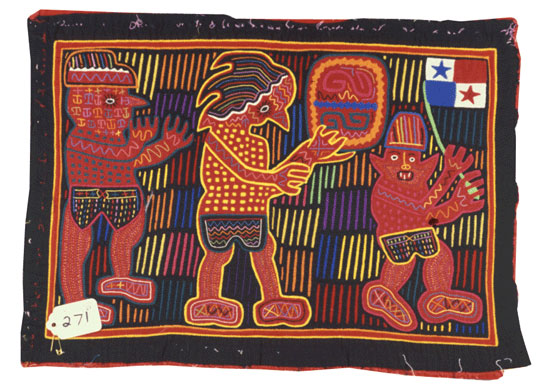
Parade of Musicians [1997.1.200]
This mola shows two musicians with a flag bearer. The musicians are playing tambourines and all the characters are in costume. This is one of a pair of molas (see 1997.1.201) that is the front and back of the same garment. The two panels represent a parade taking place on one of the holidays, possibly in Panama City. The panel on the back continues the procession of musicians.
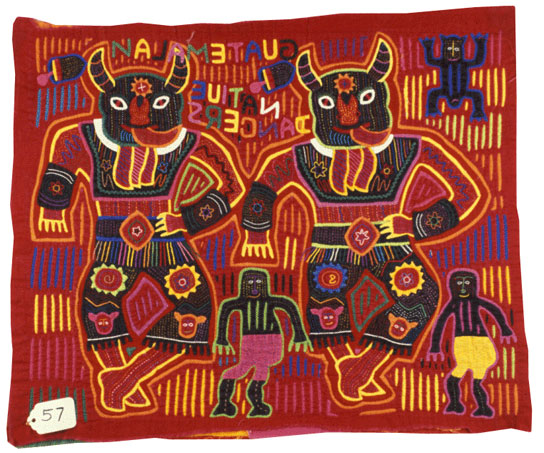
Two Costumed Native Dancers [1997.1.218]
“Guatemalan native dances” appears in reverse English lettering in this work. It depicts two ornately costumed Guatemalan dancers with masked faces and interpretive detailing. There are also a couple of small figures. Note the molas shown on the clothes worn by the dancers. This mola dates from the 1970s or early 1980s.
